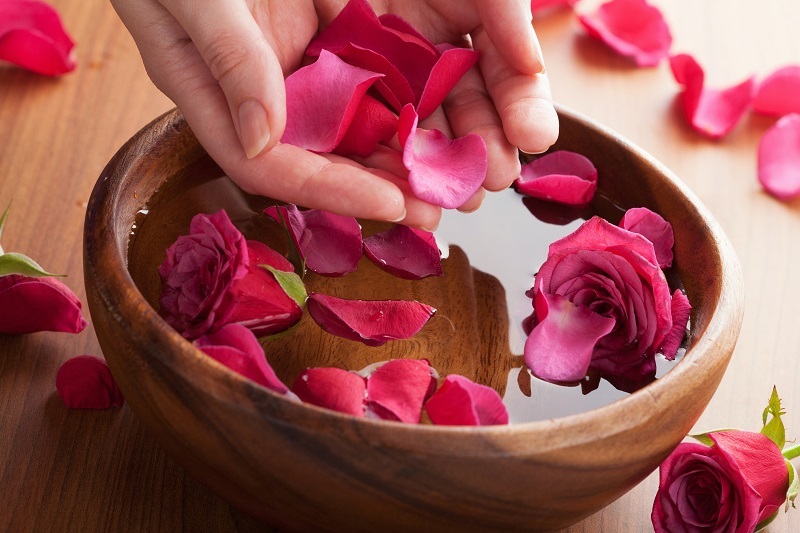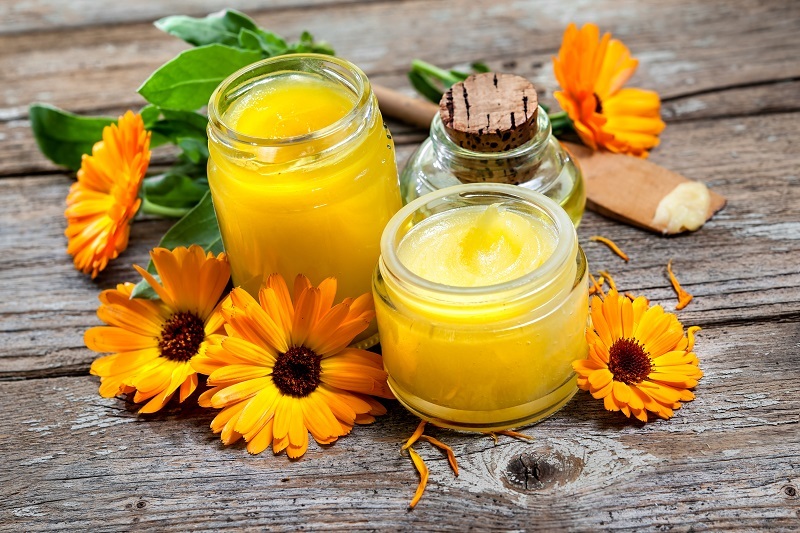Preserve the Vibrancy of Cut Flowers with These Hacks
Posted on 14/08/2025
Preserve the Vibrancy of Cut Flowers with These Hacks
Fresh flowers have the magical ability to brighten any room, lift moods, and add a touch of natural beauty to our daily lives. Unfortunately, their vibrancy doesn't last forever. But what if you could extend the beauty and life of your bouquet? Whether you've received a hand-picked arrangement or bought a lovely bunch from the store, learning how to preserve the color and freshness of cut flowers can make your arrangement last much longer. In this comprehensive guide, we'll share proven and science-backed hacks to keep cut flowers vibrant--ensuring your blooms stay stunning for days or even weeks.

Why Do Cut Flowers Fade?
Once flowers are cut from their parent plant, they lose their supply of water and nutrients. Microorganisms in the water, air, and on the stems can quickly clog vessels and accelerate wilting. Exposure to heat, sunlight, and ethylene gas (a plant hormone) also hastens aging. Understanding these factors is the first step in learning how to prolong the freshness of cut flowers in your home.
Essential Hacks for Prolonging Cut Flower Vibrancy
1. Cut Stems Correctly
The way you cut flower stems significantly affects their ability to absorb water. Here's how:
- Use sharp, clean scissors or a knife: This prevents damage to the stem and reduces exposure to bacteria.
- Make diagonal cuts at a 45-degree angle: This increases the surface area, allowing better water uptake.
- Cut underwater if possible: This prevents air from entering the stem, maintaining the capillary action.
- Re-cut every 2-3 days: Trim about a half-inch from the bottom to keep vascular tissue clear.
2. Remove Lower Leaves
Leaves submerged in water rot quickly, introducing bacteria that shorten the flower's lifespan.
- Remove all leaves below the waterline: This keeps water cleaner and reduces bacterial growth.
- Don't strip too much: Leave some foliage above water for a natural look but trim excess for better results.
3. Use the Right Water Temperature
Water temperature can dramatically influence cut flower longevity:
- Most flowers prefer lukewarm water (about 100?F/37?C): Warmer water molecules move faster, helping stems absorb fluid more rapidly.
- Bulb flowers like tulips and daffodils prefer cold water: Cool water slows down their metabolism and keeps them fresh.
4. Add Flower Food or Homemade Preservatives
Commercial flower food packets contain the right mixture of nutrients, biocides, and acidifiers to sustain blooms. If you don't have any on hand, try these homemade alternatives:
- Sugar: Acts as food for the flowers.
- Lemon juice or vinegar: Lowers the pH, helping stems draw water better.
- Bleach: A tiny drop per quart prevents bacterial growth.
DIY Mix Example: Combine 1 teaspoon sugar, 2 teaspoons lemon juice, and 1/2 teaspoon bleach per quart of warm water. Stir thoroughly before adding flowers!
5. Change the Water Regularly
Fresh water is crucial for keeping flowers vibrant:
- Replace water every 2 days: This keeps it clean, minimizes bacteria, and provides new nutrients.
- Clean the vase: Wash thoroughly with hot, soapy water each time you change the water.
- Trim stems again: Re-cutting stems during water changes promotes continued hydration.
6. Keep Flowers Cool and Out of Sunlight
Bright sunlight and warm temperatures may look pretty but speed up the decline of cut blooms:
- Display cut flowers away from direct sun, heat sources, or electronics: These can produce ethylene gas, which wilts flowers faster.
- Nighttime in the fridge: If possible, store the arrangement in the fridge overnight to slow down aging.
7. Avoid Ethylene Gas Producers
Some fruits, like apples and bananas, release ethylene gas, a natural plant hormone that causes aging:
- Keep vases away from fruit bowls: This small step can significantly increase the vibrancy of cut flowers.
Unconventional Tips for Preserving Cut Flower Freshness
8. Aspirin in the Water
Crushing a tablet of aspirin into your vase water may help lower water pH, making it easier for stems to absorb water. It's a classic grandma's hack to keep flowers fresh and lively!
9. Vodka Trick
Believe it or not, a drop of vodka acts as an antibacterial agent and inhibits ethylene production. Use it sparingly--a few drops per vase are more than enough.
10. Copper Coins
The copper in coins (like old pennies) has been found to work as a natural fungicide. Place one cleaned penny at the bottom of the vase to help reduce bacteria.
11. Hairspray for Petals
A light spritz of unscented hairspray (from a distance) can help hold petals' shape and color, especially for bouquets you're pressing or preserving as keepsakes.
Best Practices for Arranging and Maintaining Vibrant Bouquets
12. Choose the Freshest Flowers
- Buy flowers early in the day: They're often fresher after overnight storage at the florist.
- Look for firm, upright stems with tight buds: Open blooms wilt faster, while budding flowers will last longer and gradually open.
13. Avoid Overcrowding
While lush arrangements are lovely, overcrowded stems compete for water and become susceptible to rot.
- Give each stem plenty of breathing room: This also allows for air circulation and curb mold risks.
14. Watch for Signs of Wilting
- Remove dying or dead blooms promptly: Decaying matter produces ethylene gas that can ruin the entire bunch.
- Remove wilted leaves or petals regularly: This keeps the arrangement looking beautiful and healthy.
15. Consider the Flower Variety
Different flowers have unique care needs:
- Roses: Love warm water and benefit from cutting just above a node on the stem.
- Tulips: Grow in the vase! They prefer cold water and benefit from frequent stem trimming.
- Lilies and daffodils: Remove pollen-laden stamens to avoid stains and prolong vibrancy.
- Sunflowers and hydrangeas: Known for thirsty stems--ensure they're always well-hydrated.
Common Mistakes that Shorten the Life of Cut Flowers
- Neglecting to cut stems: Without frequent trims, stems become blocked and flowers wilt.
- Letting leaves sit in water: This is a haven for bacteria!
- Using dirty vases: Old residue quickly leads to rot and unhappy blooms.
- Overusing sugar or bleach: Too much can harm the flowers--always use in moderation.
- Ignoring unique flower needs: Each floral species may require custom care for maximum longevity.
Top 7 Most Long-Lasting Cut Flowers
Some flowers are naturally more resilient as cut blooms. If your goal is an enduring arrangement, favor these:
- Alstroemeria (Peruvian Lily): Up to 2 weeks or more.
- Carnations: Often last 2-3 weeks.
- Chrysanthemums: Can stay fresh for 2-3 weeks.
- Orchids: 2-3 weeks with proper care.
- Lisianthus: Up to 2 weeks.
- Sunflowers: 1-2 weeks if kept hydrated.
- Zinnias: Last up to 2 weeks.
If you want blooms that preserve their vibrancy for as long as possible, select these flowers for your home arrangements!
Expert Advice: How to Revive Wilted Flowers
- Submerge wilted stems in warm water for 20-30 minutes: This rehydrates and can perk up tired blooms.
- Try the boiling water trick: For woody stems (like roses), dip the entire stem bottom in boiling water for a few seconds to clear blockages.
- Use a mist sprayer: Lightly mist petals and leaves (not directly on blooms) to provide gentle moisture.
Sometimes, even wilting flowers can regain some life and color with a little TLC. Don't give up on a droopy bouquet until you've tried these hacks to preserve your cut flower's vibrancy!

Preserving Vibrant Cut Flowers: Frequently Asked Questions
Do cut flowers last longer in the dark?
Yes, generally, flowers age more slowly in the dark. Storing arrangements in a cool, dark place--especially overnight--can extend their lifespan and vibrancy.
How often should I trim cut flower stems?
Every 2-3 days is best. Regular trimming removes any blockages caused by bacteria or air, ensuring better water uptake and fresher flowers.
Is it true that adding soda to the vase keeps flowers vibrant?
A splash of clear soda (like Sprite) can provide sugar for blooms, enhancing vibrancy. However, don't overdo it--a couple of tablespoons per quart of water is plenty.
What should I avoid for maximum flower longevity?
- Drafts or sudden temperature changes
- Dirty water or containers
- Placement near ripening fruit
Final Thoughts: Enjoy Stunning Cut Flowers for Longer
Preserving the vibrancy of cut flowers doesn't require expensive chemicals or advanced floral knowledge. By following these simple yet effective hacks--from proper cutting and hydration to using homemade preservatives and choosing the right display spot--you can keep your bouquets looking vivid and fresh well beyond their expected lifespan. Treat your cut flowers with a little extra care, and enjoy the beauty of nature in your home for days or weeks to come.
Practice these tips to preserve cut flower vibrancy every time you bring new blooms home. The rewards--longer lasting color, fewer wilted petals, and a more cheerful living space--are truly worth the effort.
Find joy in every petal, and let your floral arrangements radiate for as long as possible with these expert-approved flower hacks!
Latest Posts
What bloom resonates with your personality
8 Captivating Facts About Sunflowers You Never Imagined
Simple Tricks to Extend Your Poinsettia's Lifespan





